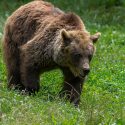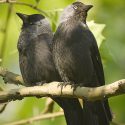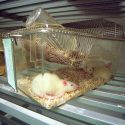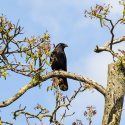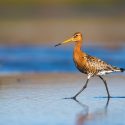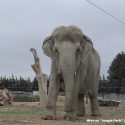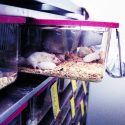Fighting for transparency should not be a full-time job
Fighting for transparency should not be a full-time job
26.04.2022
Fighting for transparency should not be a full-time job
Animal testing
When we try to access inspection reports for animal testing laboratories, the civil service often resists. However, the rulings have followed in quick succession in support of transparency permitted by law, which is not supposed to be optional. But sometimes there is not such good news: recently, the Nice Tribunal authorised the Alpes-Maritimes Prefecture to hide the identity of a laboratory… The law remains subject to interpretation and the fight for transparency becomes a tedious and long-term job.
Since last Autumn, almost thirty rulings in around twenty administrative tribunals have maintained and confirmed that the animal testing laboratory inspection reports are administrative documents that are available to the general public.
In one of the latest examples, the Clermont-Ferrand Tribunal had given this ruling for the Allier, Haute-Loire, and Puy-de-Dôme Prefectures. These rulings can only exist thanks to persistence being maintained in the long run.
In fact, administrations’ customs are often to play the silent card, while hoping that those who address them do not know about the existence of the Commission for Access to Administrative Documents (CAAD [Commission for Access to Administrative Documents — CADA), or do not have the resources, in the favourable opinion of the CAAD, to appeal to the administrative courts, the proceedings of which can take more than a year. And if this does finally end up before the court, the most likely case is still that a layperson does not know how to defend their right of access convincingly, while administrations can put confidence in their legal services to argue their refusal in terms that can be heard by a court.
Documents that should already be public
Drafting these pleas (and gathering the knowledge necessary to argue them correctly) is time-consuming, but sometimes we get a result. While prefectures claim that publishing inspection reports would be risky for the laboratories concerned, who would then be targeted by attacks from animal activists, the majority of the courts are not fooled. The prefectures also claim that animal testing in itself is so frowned upon by the general public that it would be absolutely necessary to conceal the identity of the laboratories. But again, the courts do not believe this.
It must be said that the vast majority of these laboratories do not belong to Sanofi, Royal Canin, Marshall BioResources, or other chains. In fact, the majority are public establishments – universities and other higher education or professional training establishments, but also research teams from CNRS, Inserm, INRAE, or even military laboratories… Why would we not have the right to know where our money is being used in these research centres? And why do we not have a right to know when these centres break the law with public money; with our money?
Transparency on show
Numerous laboratories incidentally signed a ‘transparency charter on the use of animals for scientific and regulatory purposes’ last year. It seems that the term ‘animal testing’ does not really attract public favour – but recognise that a charter that does not commit a research centre to much other than advertising animal testing and its regulation is a pretty clever find. This allows the general public to believe that laboratories have nothing to hide, while the civil service does what it can so that no really substantial information can be leaked.
Even those who are looking to whistle blow internally can find themselves without a job while nothing is done to resolve dysfunctions. We hope that this type of situation will disappear with the protection of whistle-blowers permitted by the law adopted unanimously by the Senate on 16 February.
Disillusions
For now, with several tribunals, case files, and rulings, everything does not always go the way that we would hope and there can be some disappointments and issues. In December, despite several more favourable decisions already released by other tribunals, the Lyon Administrative Tribunal ruled that the security risks justify the names of the establishments being hidden on the inspection reports. However, we have already found information online on animal testing at the Claude Bernard University – Lyon 1, Inserm’s P4 Laboratory, and the Charles River websites, which are not hiding that they are carrying out animal testing.
More recently on 22 February, the Nice Administrative Tribunal ruled that it was possible to hide the name of only one of the establishments concerned by the requested reports, insofar as this establishment houses an ‘A3’ animal facility which handles the rabies virus and a ‘P3’ zone which handles feline coronavirus[1]. According to this ruling, due to the presence of dangerous pathogens, revealing the name of the establishment would be equivalent to creating a security risk. Just by typing ‘A3 animal facility’ into a search engine you will quickly come across construction websites that show where they have built such animal facilities, even on the websites of establishments that themselves indicate that such an animal facility is present on their premises.
Furthermore, these pathogens directly concern viruses present in the wild and have a direct repercussion on the health of wild animals and on human populations – not to mention keeping primates and other wildlife animals in numerous laboratories, or even the inherent risks in handling pathogens regardless of the precautions taken (in the event of an escape or accident) The Environmental Code allows this kind of information to benefit from a right to extensive access for the public. This is what was argued in the case file sent to the tribunal and could have swayed the magistrates towards an even more favourable decision for our cause. But this is not discussed in the decision made by the tribunal, without it being known if this oversight is voluntary or not.
[1] The A3 and P3 acronyms refer to levels of biosafety (from 1 to 4). The higher the level, the bigger the constraints are to avoid escapes and external contaminations as much as possible.
The fight does not end there
Despite these two more nuanced decisions, since autumn, more than twenty rulings from other tribunals have established that the inspection reports for the animal testing laboratories can be communicated by hiding only the names of the staff from the establishments and the veterinary inspectors. These rulings are the result of an in-depth work that we do not see on the ground and which we hardly hear spoken about on social networks – but it is work that requires a lot of time, energy, and money to highlight what is happening and to counter the prevailing obscurity when it comes to animal exploitation.
Many case files still do not give rise to a ruling, and we are filing other requests to obtain the documents that will allow us to better understand the situation, better inform the public, and inform on unjustifiable, or even illegal, practices. As long as animal testing exists, we will fight to demand transparency, to demand public powers to invest greatly in research methods that do not involve animals, and to oblige laboratories to exclusively use these methods. We will never stop fighting for the animals who are victims of this injustice.
Translated from the French by Joely Justice
